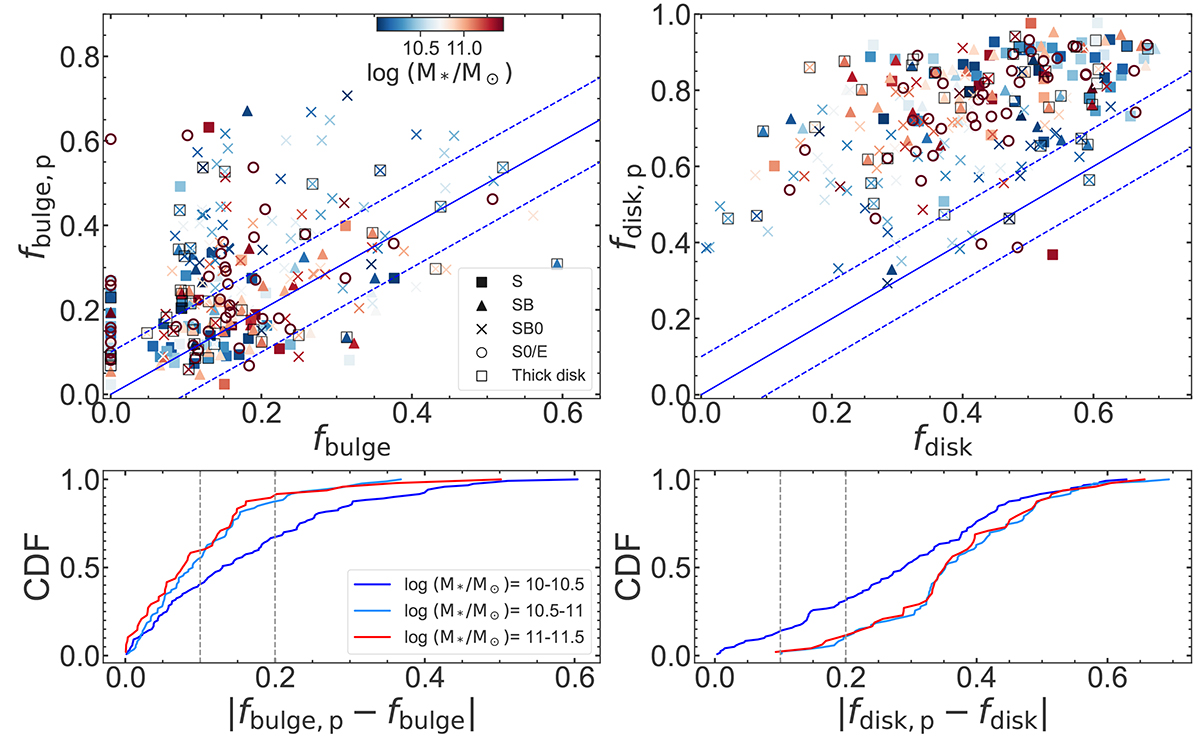Fig. 9.

Download original image
Comparison between the photometric and kinematic decomposition of the Sombrero-like galaxy in face-on views. The top panels show, from left to right, the relationship between the distributions of fbulge,p vs. fbulge and fdisk,p vs. fdisk. The different symbols represent the visual classification of each Sombrero-like galaxy. The bottom panels show the accumulative distribution profiles of their relative differences. The galaxies are color-coded by mass, with red indicating high-mass galaxies and blue indicating low-mass galaxies. The blue solid line represents y=x, while the dashed blue lines represent the ±0.1 deviation range from y=x. Galaxies with a fit stellar halo ellipticity of less than 0.3 are considered thick disks and are highlighted with black rectangles. The galaxies are divided into three mass bins: log(M★/M⊙) = 10−10.5 (blue), 10.5−11 (light blue), and 11−11.5 (red). Additionally, instances where fbulge = 0 suggest that no bulge is sufficiently prominent to be detected by the kinematic decomposition method, as noted by Du et al. (2021). The gap appearing around fbulge∼0.03 lacks physical significance. Furthermore, the morphological decomposition method inherently identifies any excess luminous structure as a bulge, regardless of whether it exhibits significant rotation or not.
Current usage metrics show cumulative count of Article Views (full-text article views including HTML views, PDF and ePub downloads, according to the available data) and Abstracts Views on Vision4Press platform.
Data correspond to usage on the plateform after 2015. The current usage metrics is available 48-96 hours after online publication and is updated daily on week days.
Initial download of the metrics may take a while.


